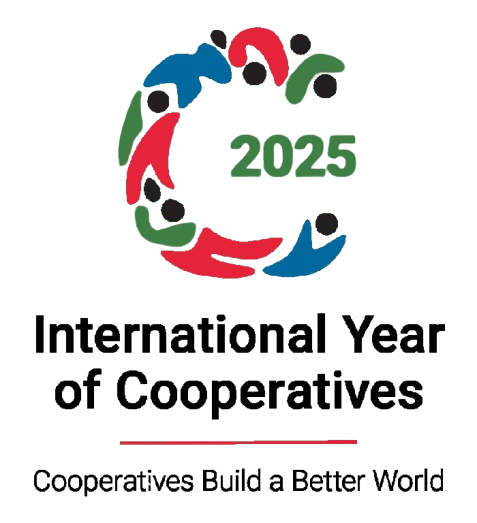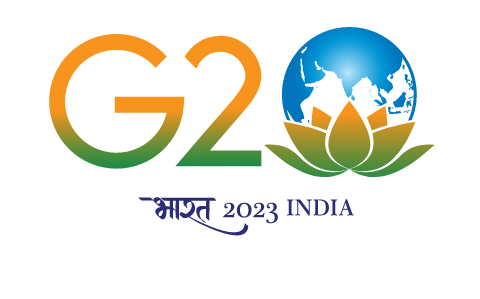- Introduction
-
Maritime sector in India has been the backbone of the country’s trade and has grown manifold over the years. To harness India’s 7,500 km long coastline, 14,500 km of potentially navigable waterways and strategic location on key international maritime trade routes, the Government of India has embarked on the ambitious Sagarmala Program which aims to promote port-led development in the country.
The concept of Sagarmala was approved by the Union Cabinet on 25th March 2015. As part of the program, a National Perspective Plan (NPP) for the comprehensive development of India’s coastline and maritime sector has been prepared which was released by the Hon’ble Prime Minister, on 14th April, 2016 at the Maritime India Summit 2016.
Vision of the Sagarmala Program is to reduce logistics cost for EXIM and domestic trade with minimal infrastructure investment. This includes:
Reducing cost of transporting domestic cargo through optimizing modal mix Lowering logistics cost of bulk commodities by locating future industrial capacities near the coast Improving export competitiveness by developing port proximate discrete manufacturing clusters Optimizing time/cost of EXIM container movement
https://sagarmala.gov.in/about-sagarmala/introduction
Sagarmala Program broadly consists of 5 components which are:
- Coastal Shipping and IWT
- Port Modernization
- Port Connectivity
- Port led Industrialization
- Coastal Community Development
- Port Modernization
-
Since about more than 90% of India's trade by volume is conducted via the country’s maritime route, there is a continuous need to develop India's ports and trade related infrastructure to accelerate growth in the manufacturing industry and to assist the 'Make in India' initiative. India has 12 major ports and approximately 200 non-major ports administered by Central and State Governments respectively.
The National Perspective Plan (2016) under Sagarmala projected 2500+ million metric tonnes per annum (MMTPA) traffic by 2025, while the current cargo handling capacity of Indian ports is ~2600+ MMTPA. A roadmap has been prepared for increasing the Indian port capacity to 3300+ MMTPA by 2025 to cater to the growing traffic. This includes port operational efficiency improvement, capacity expansion of existing ports and new port development.
https://sagarmala.gov.in/project/port-modernization
- Port Connectivity Enhancement
-
Connectivity is one of the critical enablers for ports and the end-to-end effectiveness of the logistics system drives competitiveness for the maritime industry as well. With infusion of new technology and capacity building, the cumulative/ total capacity available at ports can match demand but will not be able to handle additional traffic if the evacuation to and from the port is restricted. It is, therefore, important that connectivity of major ports with the hinterland is augmented not only to ensure smooth flow of traffic at the present level but also to meet the requirements of projected increase in traffic.
India's hinterland connectivity is mainly based on surface transport i.e. road and rail, wherein, domestic waterways (coastal shipping and inland waterways) playing a very limited role; but with programs like Jal Marg Vikas Project (Ganga NW-1) and Sagarmala, this share is expected to increase. Pipelines are predominantly used only for transporting crude oil, refined petroleum products and natural gas.
In India, smooth connectivity to ports is even more important as the cargo generating centers are mainly in the hinterland instead of in the coastal region. The long lead distance increases the logistics cost and time variability within which the cargo can be delivered.
Under Sagarmala Program , endeavor is to provide enhanced connectivity between the ports and the domestic production/consumption centers.
- Port-led Industrialization
-
Vision of the Sagarmala Program is to reduce logistics cost and time for the movement of EXIM and domestic cargo. Development of port-proximate industrial capacities near the coast, in future, is a step in this direction. In this regard, the concepts of Coastal Economic Zones (CEZs), Coastal Economic Units (CEUs), Port-Linked Industrial & Maritime Clusters and Smart Industrial Port Cities have been introduced.
Each CEZ will consist of multiple CEUs and more than one industrial cluster can be housed within a CEU. Within each industrial cluster there can be several manufacturing units. To accelerate the CEU development process, it is proposed that CEUs be prioritized in locations like Kandla, Paradip, Ennore, Vizag where land parcels are available in areas close to a deep draught port and with strong potential for manufacturing..
https://sagarmala.gov.in/project/port-led-industrialization
- Coastal Community Development
-
Approximately 18 percent of India’s population lives in the 72 coastal districts that comprise 12 percent of India’s mainland. Development of coastal communities through Marine sector related activities like fisheries, maritime tourism and corresponding skill development is an essential objective of the Sagarmala Programme. Development of cruise tourism and lighthouse tourism are other activities which are being actively considered under Sagarmala Programme.
As of 2025, the Sagarmala Program has made significant progress in promoting maritime tourism and coastal community development. Under river and coastal cruise tourism initiatives, the Ministry of Ports, Shipping & Waterways has earmarked substantial investments for developing cruise vessels, terminals, and routes, including projects on the Yamuna in Delhi, waterways in Jammu & Kashmir, and circuits in Gujarat and Madhya Pradesh. Flagship projects such as the MV Ganga Vilas river cruise continue to demonstrate India’s potential in inland water tourism. Coastal cruise circuits under the Cruise Bharat Mission are being developed in states like Gujarat, Goa, Mumbai, Kochi, and Chennai, while lighthouses across the country are being converted into tourist attractions, with 75 lighthouses already developed and 204 identified for future tourism under the Maritime India Vision 2030. In parallel, coastal community development is being advanced through integrated skill-building programs, upgrading of traditional professions, and improvements in physical and social infrastructure. Initiatives such as the Sagarmala Skill Development Program, Centers of Excellence in Maritime and Shipbuilding, and convergence with DDU-GKY have trained thousands of coastal residents, enhancing livelihoods in fisheries, tourism, and maritime sectors.
Projects like the National Maritime Heritage Complex at Lothal, including lighthouse museums and themed parks, are expected to further support local employment and economic growth. While many projects are ongoing, these efforts reflect a systematic approach to improving quality of life, fostering economic opportunities, and promoting tourism along India’s 7,500 km coastline.
https://sagarmala.gov.in/project/coastal-community-development
- Coastal Shipping & IWT
-
India's inland waterways, encompassing rivers, canals, backwaters, and creeks, offer a vast network for freight transportation. However, despite this extensive infrastructure, the utilization of inland waterways for freight transport remains limited.
As of 2025, inland waterways account for approximately 2% of India's freight modal share, a stark contrast to over 30% in developed economies
In contrast, coastal shipping has seen significant growth. The Sagarmala Programme, aimed at promoting port-led development, has led to a 118% increase in coastal shipping traffic over the past decade
By 2025, it is estimated that coastal shipping traffic will reach approximately 250 million metric tonnes per annum (MMTPA), driven by key commodities such as coal, cement, iron and steel, food grains, fertilizers, and petroleum products
To further enhance the role of inland waterways, the government has undertaken substantial infrastructure development. This includes the establishment of Multi-Modal Terminals (MMTs), Inter-Modal Terminals (IMTs), community jetties, floating terminals, and the introduction of green technologies like hybrid electric and hydrogen vessels
These initiatives aim to increase the cargo movement on inland waterways to 150 MMTPA by 2025
The development of dedicated coastal berths, bunkering facilities, and supporting hinterland transport infrastructure is also underway to facilitate seamless coastal movement.
https://sagarmala.gov.in/projects/coastal-shipping-inland-waterways
- Sagarmala Finance Corporation Limited
-
Sagarmala Development Company Limited (SDCL), established on August 31, 2016, under the Ministry of Ports, Shipping and Waterways (MoPSW), has been pivotal in advancing India's maritime infrastructure. In 2025, SDCL underwent a significant transformation, rebranding as Sagarmala Finance Corporation Limited (SMFCL). This change reflects its expanded mandate to serve as India's first Non-Banking Financial Company (NBFC) dedicated to the maritime sector. Registered with the Reserve Bank of India (RBI) on June 19, 2025, SMFCL is categorized as a Miniratna, Category-I Central Public Sector Enterprise (CPSE)
SMFCL's primary objective is to provide financial solutions tailored to the maritime sector, addressing critical financing gaps and supporting the development of ports, shipping infrastructure, and related industries. The corporation aims to facilitate the modernization of ports, enhance connectivity, and promote sustainable growth within the maritime economy
SMFCL operates under the administrative control of the Ministry of Ports, Shipping and Waterways. The corporation's leadership includes senior officials from the Ports Department, with T.K. Ramachandran serving as the Chairman
https://sagarmala.gov.in/about-sagarmala/sagarmala-development-company-limited-sdcl
- Indian Port Rail& Ropeway Corporation Limited
-
Indian Port Rail & Ropeway Corporation Limited (IPRCL), established in 2015 under the Ministry of Ports, Shipping and Waterways (MoPSW), is a Schedule ‘B’ equivalent joint venture company focused on enhancing port connectivity and multimodal transport infrastructure in India.
As of 2025, the Ministry holds a 90% indirect stake in the company. IPRCL’s mandate includes developing last-mile rail connectivity to major ports, modernizing port railway infrastructure, implementing aerial ropeway systems in challenging terrains, and providing consultancy services for port-related transport projects. Notable projects include the Kashi Ropeway in Varanasi, set to commence operations in August 2025, which will connect the Cantonment Railway Station to Godowlia Chowk and transport up to 96,000 passengers daily. The company has strengthened its workforce through recruitment of engineers and apprentices across civil, electrical, signal & telecommunication, and mechanical disciplines, while also partnering with technology firms like Aivot AI Pvt. Ltd. to enhance operational efficiency.
Positioned as a key facilitator under the Sagarmala Programme, IPRCL aims to integrate rail and ropeway systems to reduce congestion, improve logistics efficiency, and contribute to the sustainable economic growth of India’s coastal and hinterland regions.
https://sagarmala.gov.in/about-sagarmala/indian-port-rail-corporation-limited-iprc












